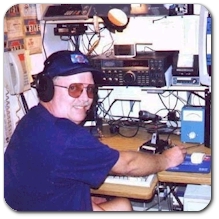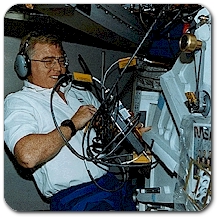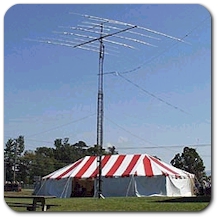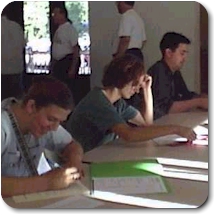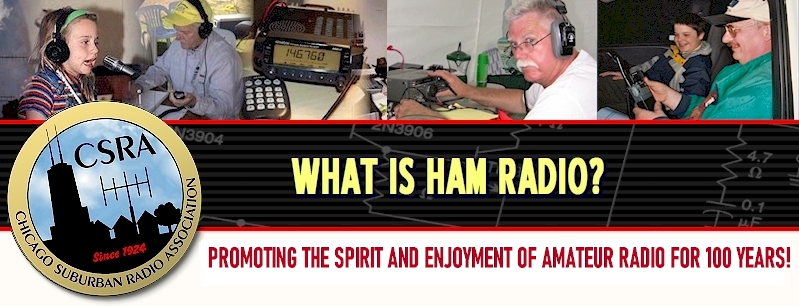 |
||||
|
|
All about Ham Radio! Ham radio is the premier high-tech hobby. It's enjoyed by people from all walks of life from around the world. The rules for becoming an amateur (ham) radio operator vary from country to country around the world. On this page we're going to tell you a little about the hobby and how you can obtain the necessary license to operate in the United States.
Ham radio operators use two-way radio stations from their homes, cars, boats and outdoors to make hundreds of friends around town and around the world. They communicate with each other using voice, computers, and Morse code. Some hams bounce their signals off the upper regions of the atmosphere, so they can talk with hams on the other side of the world. Other hams use satellites. Many use hand-held radios that fit in their pockets. Hams exchange pictures of each other using television. Some also like to work on electronic circuits, building their own radios and antennas. A few pioneers in Amateur Radio have even contributed to advances in technology that we all enjoy today. There are even ham-astronauts who take radios with them on space shuttle missions and thrill thousands of hams on earth with a call from space!
Using even the simplest of radio setups and antennas, amateurs communicate with each other for fun, during emergencies, and even in contests. They handle messages for police and other public service organizations during all kinds of emergencies including:
It's never been so easy to get into ham radio. All ham radio operators must be licensed before they can legally operate. This differs a great deal from the CB (i.e. truckers) and FRS (i.e. dime-store walkie-talkie) services which require no licenses. Amateur radio operators must be licensed because they are given transmitting privileges on a wide variety of frequencies and are allow to use just about any equipment imaginable, even home built radios. Amateurs are allotted not single specific frequencies but usually whole ranges (bands) of different frequencies to operate on. These frequencies and methods of transmission are are specified by FCC rules and so it is therefore necessary to be generally familiar with your operating limitations in order to transmit lawfully.
In order to qualify for an amateur radio license, you must pass certain tests to determine that you have the required knowledge. Fortunately, the tests are not terribly difficult for most people. There are three license levels (known as classes) where each class grants greater privileges to the individual. There is a single written test for each license class, and for the advanced classes, The former Morse code test is no longer required! The license classes are: Technician Class - this is the entry level license. It gives privileges on all amateur frequencies above 50 MHz and is the most popular. It requires only a written test. General Class - this is the mid-level license. It enables privileges on most amateur frequencies below 50 MHz and includes global HF (shortwave) communications. This license also has a written test. Extra Class - this is the highest level license. It grants privileges on all amateur frequencies. It has its own written test and requires that you also have passed all of the Technician and General class written tests.
This part is easy. The first thing you should do is obtain the home study materials to prepare you for the test. These will give you the background that you'll need to understand the gist of what the tests are about. You can even order study materials online! Ham radio classes are also offered throughout the Chicagoland area. When you're ready to take the test, you should then locate the nearest license exam opportunity. The Chicago Suburban Radio Association (CSRA) will be happy to advise you of the next available test session. CSRA can also assist you on where you can find ham radio study materials, ham classes and test sessions. The ARRL (American Radio Relay League) and the W5YI-VEC also offer many testing opportunities across the country. That's it! It typically takes about 2 weeks for your new license to arrive in the mail and you're ready to go! In the meantime, you can look into the CSRA to find out more about what's going on in your area.
portions reprinted courtesy of W5YI, ARRL, QRZ.com
|
|||
|
|
||||
 |
||||

